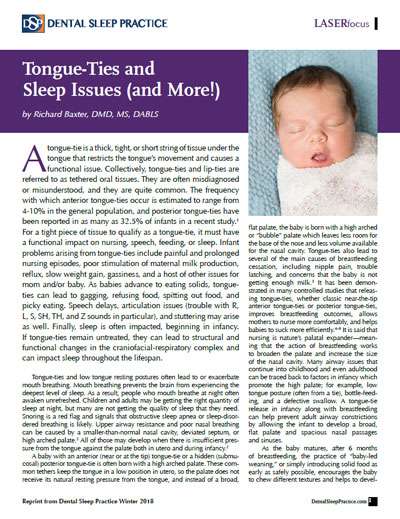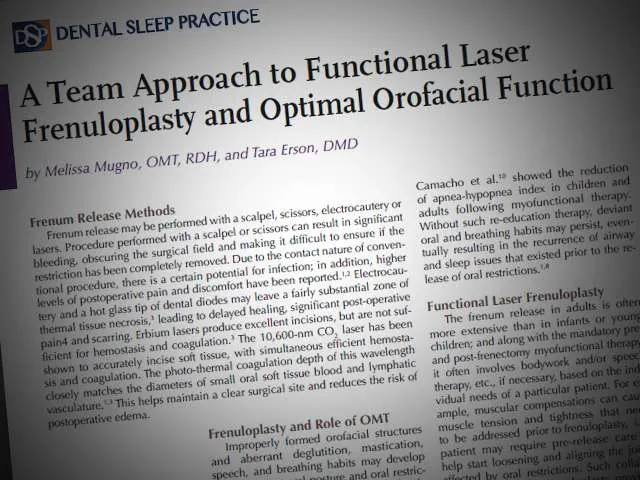Latest Publications

Tongue-Tie Update: What Dentists Need to Know About This Common Condition
Like many of you, when I finished dental school, I had some idea of what a tongue-tie is and how it can impact speech and possibly gum recession. But in four years of dental school, we had only one slide on tongue-tie treatment, and in pediatric residency, we read only one article on tongue-ties, which was already ten years old and outdated.
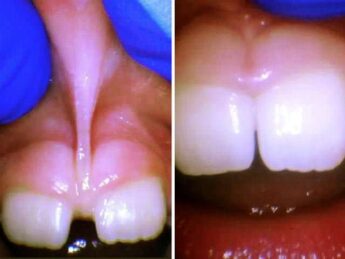
Safety and efficacy of maxillary labial frenectomy in children: A retrospective comparative cohort study
Highlights
Early treatment of a lip-tie does not form scar tissue that prevents diastema closure.
Treating lip-tie in the primary dentition yields present and future cosmetic benefits.
Treatment of a maxillary frenum provides benefits to families with minimal risks.
Providers should consider treating a lip-tie for oral hygiene or cosmetic concerns.

LightScalpel Functional Frenectomies and Frenuloplasties: A Partial Literature Review
First described in 2016, the LightScalpel Functional Releases include the following steps:[1-4]
Pre-surgical Oro-Myofunctional Therapy (OMT);
LightScalpel laser release, combined with the intra-operative Functional Assessment;
Post-surgical OMT exercise program to ensure long-lasting Functional Results.
The goal of a Functional Frenectomy in children, adolescents and adults is to release the restricted frena, i.
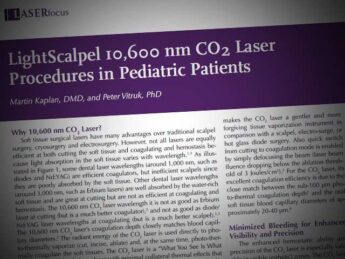
LightScalpel 10,600 nm CO2 Laser Procedures in Pediatric Patients
Why 10,600 nm CO2 Laser?
Soft tissue surgical lasers have many advantages over traditional scalpel surgery, cryosurgery and electrosurgery. However, not all lasers are equally efficient at both cutting the soft tissue and coagulating and hemostasis because light absorption in the soft tissue varies with wavelength.[1-3] Some wavelengths (around 1,000 nm, such as diodes and Nd:YAG) are efficient coagulators, but inefficient scalpels since they are poorly absorbed by the soft tissue.
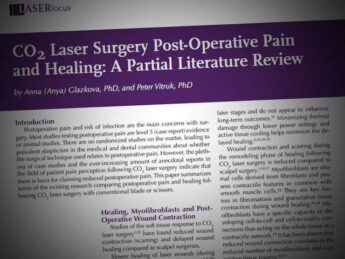
CO2 Laser Surgery Post-Operative Pain and Healing: A Partial Literature Review
Introduction
Postoperative pain and risk of infection are the main concerns with surgery. Most studies testing postoperative pain are level 5 (case report) evidence or animal studies. There are no randomized studies on the matter, leading to prevalent skepticism in the medical and dental communities about whether the surgical technique used relates to postoperative pain.
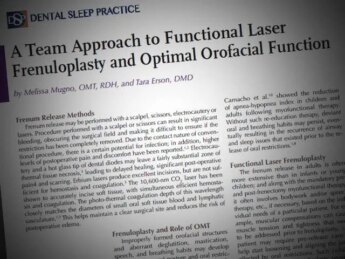
A Team Approach to Functional Laser Frenuloplasty and Optimal Orofacial Function
Frenum Release Methods
Frenum release may be performed with a scalpel, scissors, electrocautery or lasers. Procedure performed with a scalpel or scissors can result in significant bleeding, obscuring the surgical field and making it difficult to ensure if the restriction has been completely removed. Due to the contact nature of conventional procedure, there is a certain potential for infection; in addition, higher levels of postoperative pain and discomfort have been reported.
